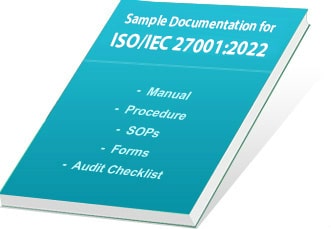
Inside the complex realm of cybersecurity, the strength of an organization’s defense frequently lies in its documentation. This article, “Paperwork Power: Leveraging ISO 27001 Documentation for Cybersecurity Success,” investigates the vital part of ISO 27001 documents, with a chosen mindfulness of the ISO 27001 ISMS policy, in invigorating cybersecurity measures. Dig into the world of fastidious documentation and discover out how organizations can tackle the power of paperwork for a strong and strong cybersecurity posture.
Understanding the Foundation: ISO 27001 Documents
ISO 27001 documents function as the bedrock of an organization’s Information Security Management System (ISMS). This part offers an outline of the different records required for ISO 27001 compliance, emphasizing their position in organizing a systematic technique for overseeing sensitive information. From approaches and approaches to endanger tests, each report plays a one-of-a-kind work in making a comprehensive cybersecurity system.
The Core Pillar: ISO 27001 ISMS Policy
At the heart of ISO 27001 documentation is the ISMS policy. This scope units the tone for the organization’s commitment to information security. Discover the critical components of a sturdy ISMS policy, from characterizing parts and obligations to setting up a chance control system. Understanding the complexities of making a complete ISMS policy lays the establishment for capable cybersecurity governance.
Certification Journey: The Roadmap in Documents
Embarking in the direction of ISO 27001 certification entails meticulous documentation. This section navigates through the key reports required for the certification system. From the Statement of Applicability (SoA) to the Risk Treatment Plan (RTP), learn how each report contributes to illustrating compliance with ISO 27001 standards. Find the strategic technique for documentation that hastens the certification adventure.
Unveiling the Power of Documentation
ISO 27001 documents are not mere bureaucratic exercises; they’re powerful equipment for boosting cybersecurity resilience. Find how well-documented processes and procedures streamline occurrence reactions, mitigate risks, and advance a culture of continual improvement. This phase showcases real-world examples of organizations leveraging documentation for proactive cybersecurity measures.
Mastering Compliance: Documenting for Success
Attaining ISO 27001 certification is a testament to the organization’s commitment to cybersecurity excellence. This section explores the synergy between ISO 27001 documentation and the certification procedure. Find out how companies can grasp compliance via effective documentation, ensuring that rules and procedures align seamlessly with the ISO 27001 standard.
The Future of Documentation in Cybersecurity
As generation evolves, so too does the panorama of cybersecurity. This end takes an ahead-searching technique, exploring the destiny of documentation inside the context of rising cyber threats and evolving compliance necessities. How can organizations adapt their documentation practices to live in advance in the dynamic cybersecurity environment?
Navigating the Landscape of ISO 27001 Documents
In the ever-evolving landscape of cybersecurity, powerful navigation requires a keen know-how of the nuances inside ISO 27001 documentation. This section delves into the intricacies of managing documentation, emphasizing the importance of version control, access permissions, and regular updates. A well-maintained documentation system ensures that cybersecurity strategies remain dynamic and responsive to emerging threats.
In this exploration of “Paperwork Power,” readers will gain insight into the strategic role of ISO 27001 documents, specifically the ISMS policy, in strengthening cybersecurity defenses. From the basics to the certification journey and future considerations, this article provides a comprehensive guide for organizations looking to leverage paperwork for cybersecurity success.





